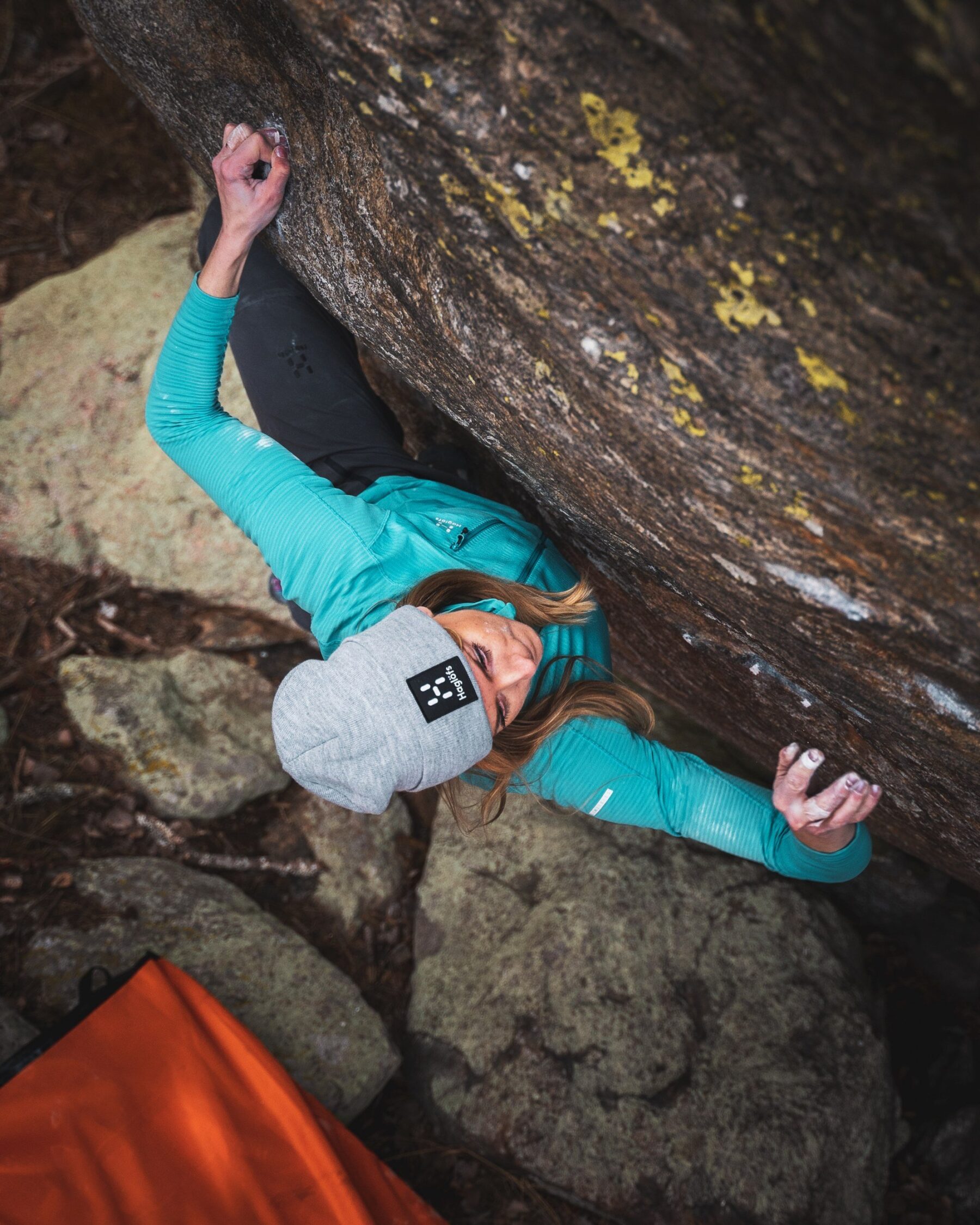Dancing with Orcas
Story | Andreas B. Heide & Hanniah Tariq

Photo: ©David González
It is December in Arctic Norway. The stage is set in an archipelago adjacent to the North Atlantic. I find myself in a wetsuit submerged in frigid water just a couple of degrees above freezing. The surrounding islands are covered in snow, and although it’s just past noon, darkness is already setting in. The sun had left us several weeks ago, and only the polar night prevails. I’m in the midst of a school of herring which has been pushed into the shallows by an animal known for indiscriminately devouring both white sharks and seals alike. As I float there, I see a large black fin slicing through the water headed straight in my direction. I hold my breath, dive down and get ready for a close encounter with the apex predator of the sea, the killer whale. This is the story of how a passion for the ocean led me to spend three winters with killer whales in Arctic Norway, using the sailboat Barba as a platform.
It all started four years ago when I was given an assignment to photograph a unique annually occurring phenomenon. Thousands of Killer Whales come into the coastal waters from November through January, to feed on one of the most abundant fish species in the North Atlantic. The Herring, also known as the silver of the sea for its brilliant scales, is a key species for predatory fish, large baleen whales, seagulls and killer whales.
I had my first encounter in open water. They appeared out of nowhere, soaring effortlessly through the salty liquid, with an almost ghost-like appearance. There is no mistaking a killer whale with its contrasting black back, white chest and sides, and a white patch above and behind the eye. It was a brief encounter with a group of ten individuals or so, lasting only seconds. But, it was still enough to spark a lifelong curiosity and the will to discover more about these magnificent animals. However, with a RIB (fast rigid inflatable boat) as a vessel and land-based accommodation, I missed the sensation of freedom and flexibility provided by a sailboat.
And so it was meant to be. The last three consecutive winters I have been up North with my sailboat Barba. It’s a fine-tuned sailing vessel, optimised for close interactions with nature. The subsequent numerous trips to the Arctic, the pack ice surrounding the North Pole and several encounters with polar bears are just some of the many noteworthy highlights.
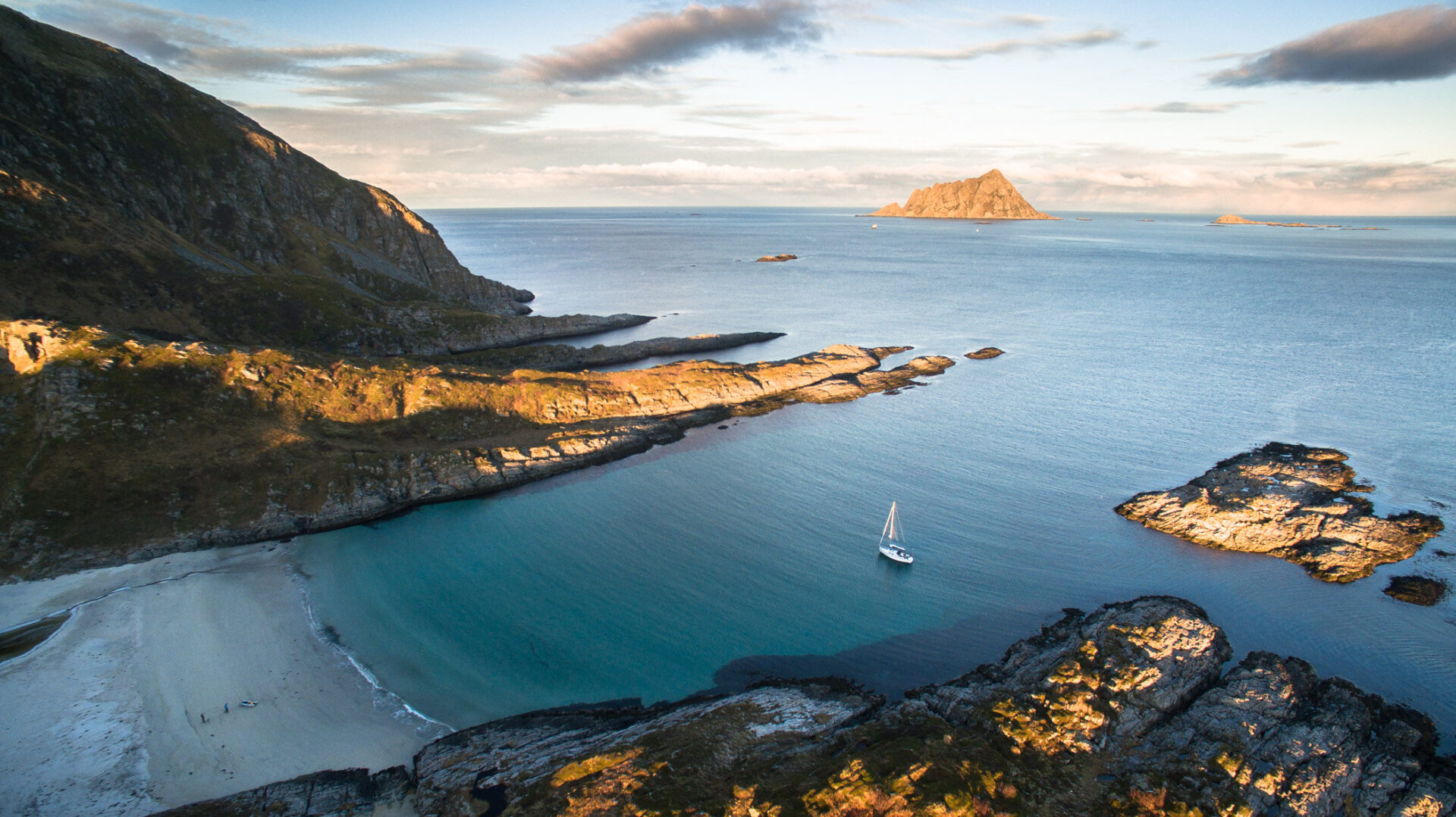
Photo: © Andreas B. Heide
I think they recognise us as being different, based on the mutual curiosity that results from the encounters.
Barba herself measures 37 feet in length and was originally designed for operating in the Mediterranean. She has since been modified to the best of my abilities to be able to work in the challenging conditions up north, where equipment failure can have catastrophic results. With temperatures dropping to minus 20 degrees at times, the cold is definitely the biggest challenge. The bow cabin is used for gear storage, as it is poorly insulated and ice forms inside over time. The crew, typically comprising of four people, sleeps in the two aft cabins. The occasional fifth crew member sleeps in the saloon. So, the boat is just big enough to share with five good friends. The bathroom holds one of the few luxuries onboard, a shower. We keep warm and comfortable with a diesel heater. With this setup, we are able to spend weeks in the field, without any outside support.
Proper clothing is a bit of a science. We wear wool as an inner layer, and a GORE-TEX outer shell from Musto’s technical HPX range. Ice fishing boots keep the feet reasonably warm, and rubber gloves with wool inner-liners do the same trick for the hands. A red wool cap is the preferred headgear – an homage to the legendary ocean explorer Jacques Cousteau. When freediving, we use 7mm wetsuits that allow for the speed and agility required to keep up with the whales, to the extent that is possible.
Sailing during the arctic winter is a challenging undertaking. It’s an intense moment as you navigate between underwater rocks and breaking waves during a blizzard in the dark. You are cold and covered in ice, trying to make it to a safe anchorage, relying solely on digital charts and the radar. You trim the sails and control the boat, knowing that there is little room for error. You really begin to understand why the vikings who once ruled these waters would call their boat The Seahorse. I too am often left with the feeling that I am taming a wild stallion. Then there are also days when the sea is calm, and we gently cruise along in the dim daylight, seamlessly replaced by Northern Lights as night sets in. The diversity, challenge, and the intimate interaction with nature are some of many things that make me long for winter.
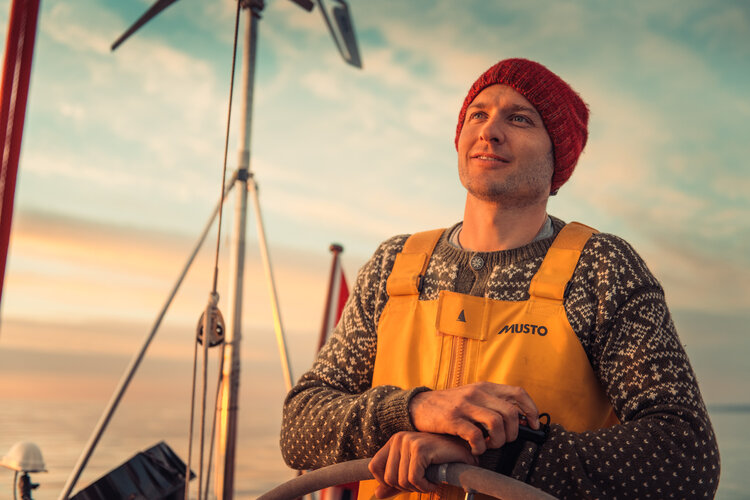
Photo: ©Conor McDonnell
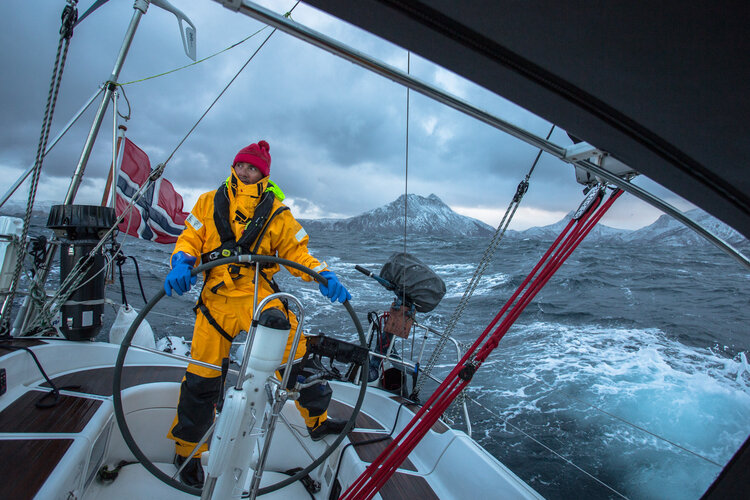
Photo: © Andreas B. Heide
The ultimate reason though is getting to understand the killer whales. I prefer to call them orcas as it’s a more dignified name, eliminating the negative association with that of a killer. The orca is an apex predator, not preyed upon by any other animal in the wild. They are known to hunt a wide range of ocean creatures, from fish to seagulls and baleen whales alike. With the second largest brain in the animal kingdom, in correlation with behavioural studies, they are highly intelligent. Measuring the intelligence though is difficult in a species whose environment and behavioural strategies are very different from our own. As for why they do not attack humans, no one really knows. Weighing as much as six tons and measuring up to eight meters, we would be an ideal epicurean match. Personally, I think they recognise us as being different, based on the mutual curiosity that results from the encounters. In addition, through the years of evolution, we have not been a natural part of their diet.
By using the sailboat, we are able to go far afield, reaching the remote areas where we are alone without the disturbance of an ever-growing whale watching industry. We have also observed that a sailboat is a non-intrusive green platform and a wonderful way to interact with nature. Over the years, I have had the privilege of spending hours in the water with orcas and hundreds of hours observing them from the surface. I have witnessed a range of different behaviours, but there is one common denominator. You always find them in groups. The orca is a highly complex social organism with cohesive family groups called pods, and as many as four generations can stay together. The bird’s eye view provided with a drone has also allowed for the deeper study of the different behavioural patterns. During transit, the entire pod will be on the move, cruising at an average speed of about seven knots, allowing them to cover well over a 100 km in a day. The calves will stay in the wake of their mothers, aided by the resulting hydrodynamic drag. There is also a resting phase, known as ‘logging’ when they will float peacefully on the surface, resembling floating timber. They also have what I like to call chill out behaviour, when they play and mingle during social interactions. When you are in the water you can hear them communicate with whistles and clicks, a language we have no understanding of.
My favourite though is when they are hunting herring. This is when we are able to witness their true complexity. And this is also our preferred moment to get in the water. During feeding they take no notice of us, allowing us to get up close – within touching range. Working together like a wolf pack, they isolate a school of herring, pushing it towards the surface, facilitating the kill. They then flash their white bellies and use sounds to herd them together into what is known as a bait ball. Using their tails to slam the fish with tremendous force, they will eat the stunned herring one by one. Quite often they’re accompanied by humpbacks. Measuring up to 16 meters these ocean giants will also take part in the feeding frenzy, engulfing hundreds of herring in one go
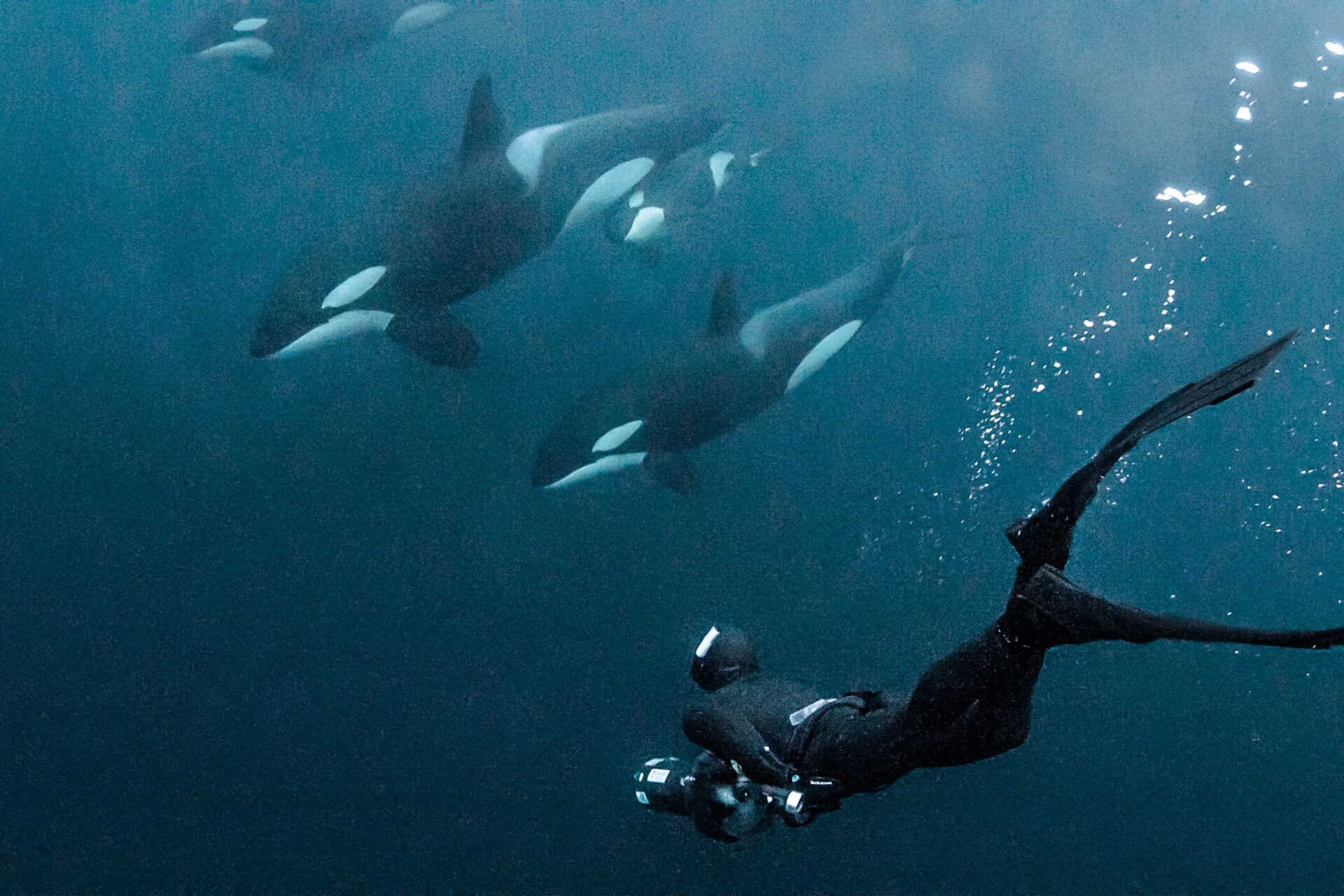
Photo: © Matthew Ferraro
Working together like a wolf pack, they isolate a school of herring, pushing it towards the surface, facilitating the kill.
The very best of these encounters is when the feeding takes place in shallow waters, where it can continue for hours on end. They will swim to a couple of meters depth, with the dorsal fin fully out of the water, and the pectoral fins close to scraping the sandy bottom. The orca will then eat one herring at a time, spitting out the head and the tail.
However, it is not only the visuals that leave me in awe. The feeding frenzy is accompanied by a cacophony of orca clicks, high pitch whistles, and grunting sounds. Occasionally you hear an explosion like sound as they tail slap the herring. Orcas have an exceptionally sophisticated echolocation ability, and pods use similar calls, known collectively as a dialect for both coordinating the hunt and possibly to add to the panic in the school of herring.
Fortunately, I am not alone to witness this beauty. We operate the Barba with typically one professional sailor in addition to myself, as well as someone to capture the beauty on film, and supporting team members in the form of photographers, conservationists, and scientists. Matthew Ferraro from California, has been with me for two seasons now. His passion for orcas is highlighted by the fact that he has worked with them in both hemispheres, and together with his wife he shares the memory of an orca that they helped off a beach in New Zealand some years back. Matthew will tell you he is an underwater cinematographer. But, if you ask the professionals in the industry, they will tell you he is one of the very best. If you ask me about Matthew, I see him as more of an artist, using the camera as a tool, enabling him to share the beauty we witness with a global audience. Matt has worked over ten years with the prestigious Cousteau family diving with white sharks outside the cage and filming anacondas in the Amazon. Yet, he describes diving with orcas as the most intense thing he has ever experienced.
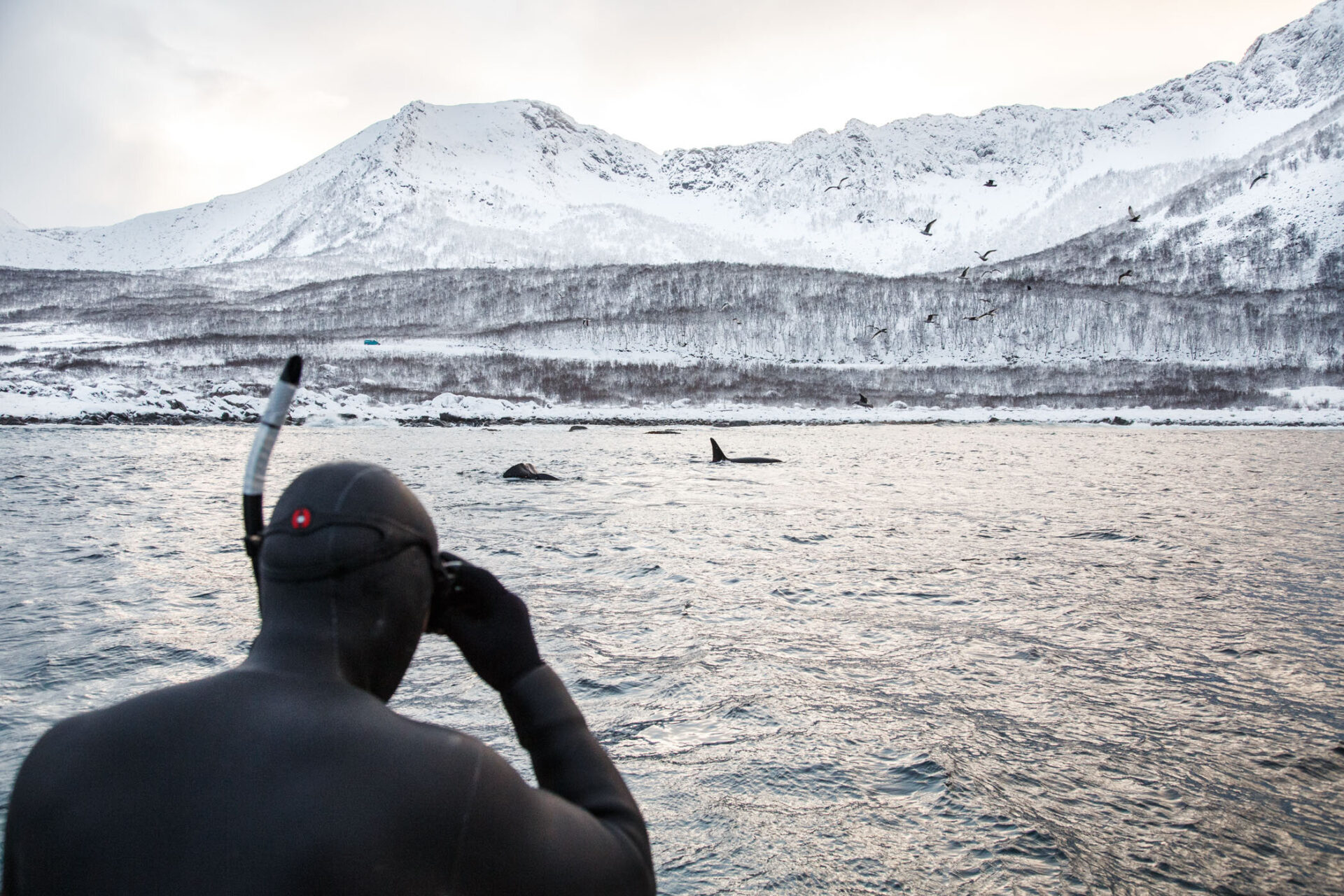
Photo: © Andreas B. Heide
For me, what started with swimming with orcas out of curiosity, has over time developed into a lifelong project where we wish to tell their story. With the help of scientists and film Director Matthew Ferraro, we are working on making a documentary portraying the orcas as ocean ambassadors. In the North, I have tried to understand the orca both from observing them in the field and by talking with scientists and fishermen. My understanding is that their greatest threat in Norwegian waters is that of marine pollution. Being on the top of the food chain, they are particularly at risk of poisoning from bioaccumulation of toxins, a fate they share with many other apex predators of our oceans, including polar bears and beluga whales.
Yet the story of the Norwegian orca is one of optimism. The orcas were suffering in Norwegian waters only a few decades back. The herring had been fished close to extinction, and the orcas were being given the blame and hunted upon. Following proper fisheries management, the herring has since recovered and with it, the orca population and the ecosystem of the vast Norwegian seas. This proves that if care is taken, the ocean can recover and sustain humans and whales alike.
As for me, when the days grow shorter this upcoming fall, I will sail north for seven days straight from my hometown of Stavanger in southern Norway. In the cold arctic, in the midst of steep fjords and weather-beaten cliffs, one of the greatest spectacles adventure has to offer awaits.
Andreas Heide is part of #TeamMusto. Find out more at www.musto.com
Don’t miss a single adventure
Sign up to our free newsletter and get a weekly BASE hit to your inbox
You might also like
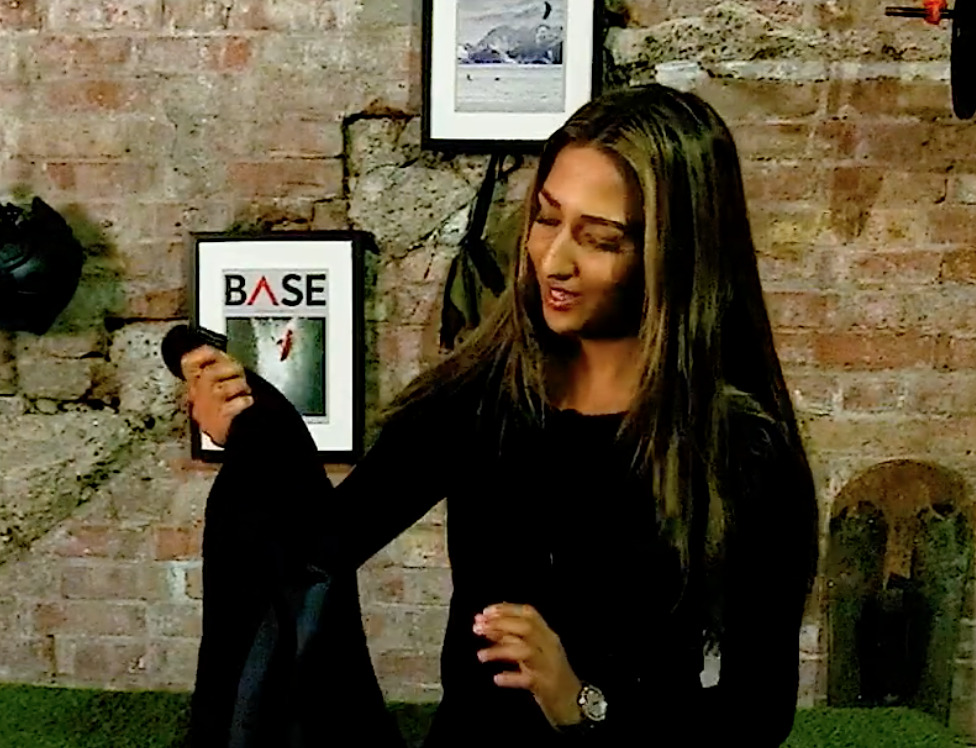
Video • BASE editorial team • May 09, 2023
Top Five Scariest Things About Scuba Diving
Tips and tricks to overcome your fears, find your sea legs and take the plunge
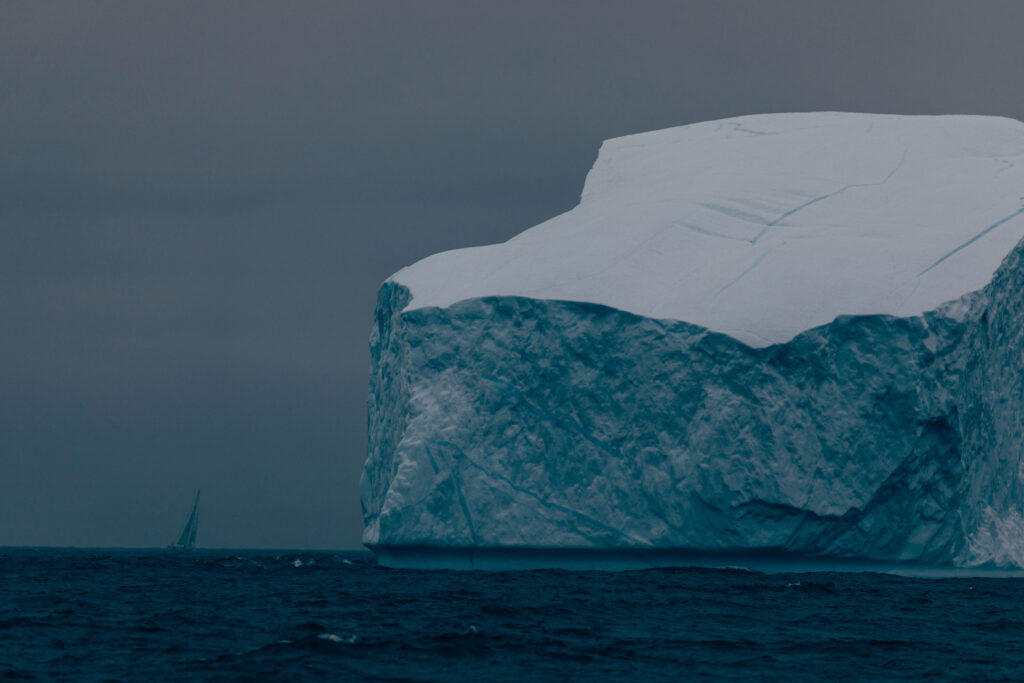
Story • SKIRR Adventures • Jan 10, 2023
Among Ice Giants
A 4,820 nautical mile sailing expedition to some of the most remote places on Earth
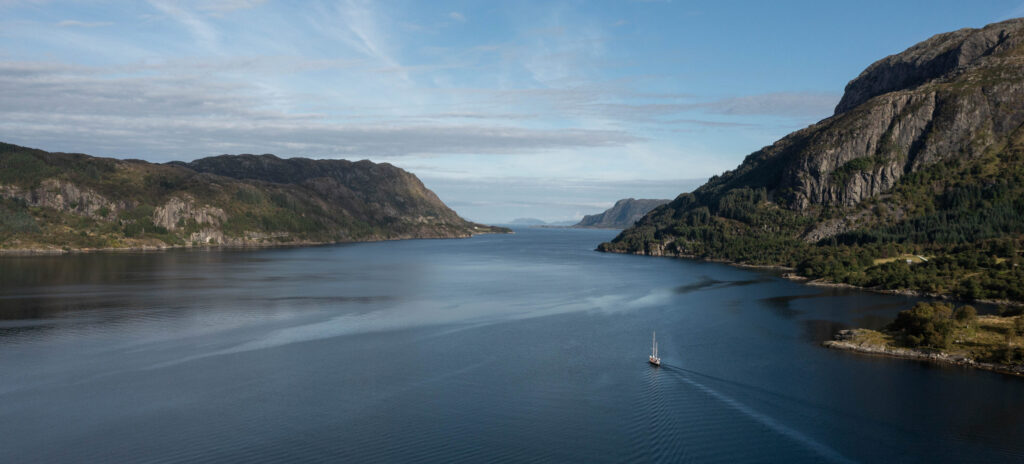
Story • Nino Mazzone • Dec 08, 2022
North on The Wind
A sailing expedition to discover the coastal mountains of Arctic Norway
